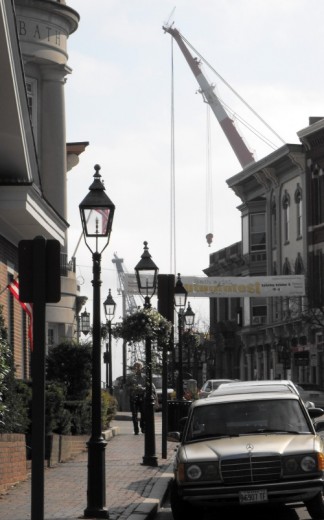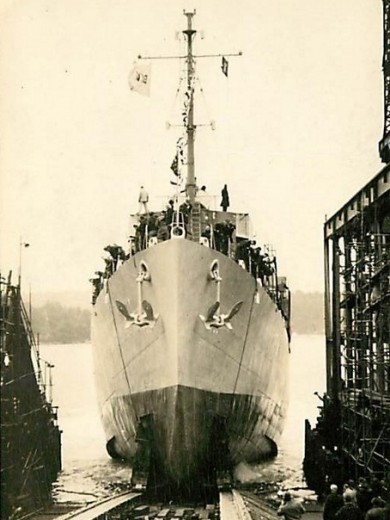Read excerpt from start of this article:
 General Dynamic’s Bath Iron Works — BIW for short — builds Navy destroyers. Its cranes tower over the city. I mean that literally, as they’re visible from downtown and from just about any street in Bath. Closer up, the shipbuilding facilities are enormous — an awe-inspiring sight. If you want details about the mega-structures that make up the shipyard, take a look at the BIW web site.
General Dynamic’s Bath Iron Works — BIW for short — builds Navy destroyers. Its cranes tower over the city. I mean that literally, as they’re visible from downtown and from just about any street in Bath. Closer up, the shipbuilding facilities are enormous — an awe-inspiring sight. If you want details about the mega-structures that make up the shipyard, take a look at the BIW web site.



Bath Iron Works was founded by Thomas Worcester Hyde in 1884. Hyde initially manufactured commercial and maritime castings, but soon turned to building steel vessels — helping Bath recover from the end of the wooden-ship era (more on Bath’s booms and busts in a minute).
But it was before and during World War II that Bath Iron Works became a powerhouse:
“Beginning in 1934 Bath Iron Works completed 83 destroyers and destroyer-minelayers by the end of World War II — the largest destroyer output of any builder,” notes the Destroyer History Foundation (yes, there is such a group).
As recently retired Bath planning director Jim Upham adds, “During WWII, Bath Iron Works built more ships than did all of Japan.”

Want to see a lesson in long-term productivity in defense of our nation? Just scroll down and down and down the Wikipedia entry on Bath Iron Works.
Over the past two decades, BIW has been cranking out the Arleigh Burke class of destroyer.
According to Portland Press Herald reporter J. Hemmerdinger (in “Assessing the future for Bath Iron Works,” Sept. 25, 2011) “the shipyard has built 33 Arleigh Burkes since the 1990s,” slightly outpacing its chief competitor, the Ingalls shipyard in Pascagoula, Mississippi. But production of this class of naval ship, if not yet at its end, is slowing down.

As Hemmerdinger notes, “most experts expect that continued demand for new destroyers will ensure the long-term stability of the company.” But that’s no sure thing, with potential heavy defense cuts in the offing.
Why is Bath Iron Works so critical for Bath — and for the State of Maine?

As Down East magazine’s Joshua F. Moore explained (in “City of Surprises,” May 2010), Bath Iron Works “is Maine’s largest private employer, running three daily shifts comprising some 5,640 employees (about 9 percent of them Bath residents). It is also Bath’s largest taxpayer, contributing … more than a quarter of the overall tax base.”
That’s part of what Upham also stressed to us — that is, about a dozen planners attending the Northern New England APA conference — during a tour of his hometown.
You must be logged in or a PlannersWeb member to read the rest of the article.